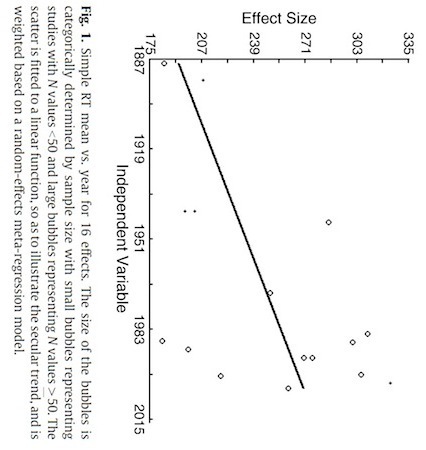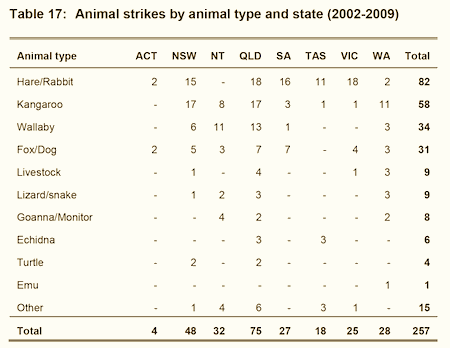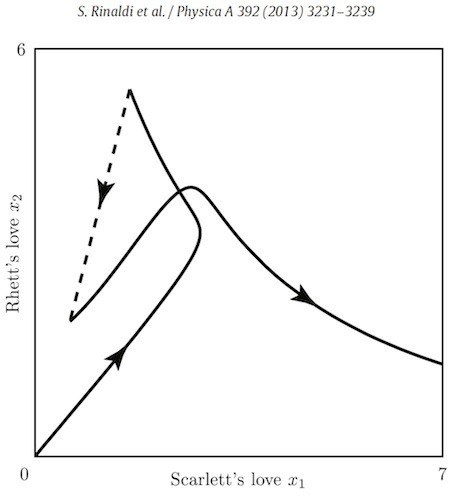Marc Abrahams's Blog, page 480
July 6, 2013
Robots speech – Japanese pneumatic style
There are now several well-established ways to create artificial voices – some take a purely electronic approach, while others, like Professor Hideyuki Sawada at Kagawa University, Japan, have explored electro-mechanical methods. The video above shows how pneumatically-driven artificial lips, tongues, voicebox and nasal resonating cavities might simulate speech. Unfortunately, the mpeg videos linked-to via the professor’s website are now ’404 not-found’ (missing) – but fortunately we can view more Japanese pneumatic voice synthesis progress at other Japanese research websites, like that of Professor Atsuo Takanishi at Waseda University. The Takanishi Laboratory provides a selection of online videos which demonstrate progress (also in mpg format) – may we recommend :
BONUS: Mashup artist Vonyco at Youtube has made a musical video compilation of some of the featured bots :
[Advisory : May induce earworms]

July 5, 2013
The Wug Test and its inventor [video]
Towards a taxonomy of teddy bears
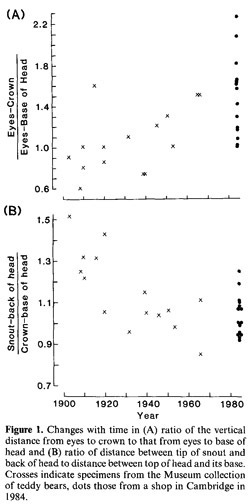
Detail from the Hinde/Barden study
New efforts (see below) in France are adding info to the past, isolated attempts to classify the different kinds of teddy bear. The three most celebrated academic studies are:
“The Survival of the Cutest: Who’s Responsible for the Evolution of the Teddy Bear?” P.H. Morris, V. Reddy, and R.C. Bunting, Animal Behaviour, vol. 50, 1995, pp. 1697-700. The authors, at the University of Portsmouth, U.K., point out that:
“Hinde and Barden suggested that the teddy bear has evolved to match sign stimuli that release nurturant behaviour… Over its short history the teddy bear has evolved from a long-snouted, long-limbed bear to a cute, snub-nosed, baby-like creature.”
and
“Teddy Bear Patriarchy: Taxidermy in the Garden of Eden, New York City, 1908-1936,” Donna Haraway, Social Text , vol.11, 1984, pp. 20-64.
and
“The Evolution of the Teddy Bear,” Robert A. Hinde and Les A. Barden, Animal Behaviour, vol. 33, no. 4, 1985, pp. 1371-1373.
The new project, called “Mission Peluches“, is based at Université Montpellier. The organizers explain that their group ”organizes the first inventory of plushes diversity.” They invite you to join in their efforts:

The Prisoner’s Dilemma, with real prisoners
Game theorists, some of whom are mathematicians, some economists, have enjoyed wrestling with the problem known as “The Prisoner’s Dilemma.” (Wrestling with that problem has even figured in the awarding of several Nobel Prizes in the field of economics.) Now researchers in Germany have seen what happens when some real prisoners are faced with The Prisoner’s Dilemma. They tell all, or at least some of what happened, in their study:
“Prisoners and Their Dilemma,” Menusch Khadjavi [pictured here] and Andreas Lange, Journal of Economic Behavior and Organization, vol. 92, August 2013, pp. 163–175. (Thanks to Hiroshi Gunji for bringing this to our attention.) The authors, at the University of Hamburg, Germany, report:
“We report insights into the behavior of prisoners in dilemma situations that so famously carry their name. We compare female inmates and students in a simultaneous and a sequential Prisoner’s Dilemma. In the simultaneous Prisoner’s Dilemma, the cooperation rate among inmates exceeds the rate of cooperating students. Relative to the simultaneous dilemma, cooperation among first-movers in the sequential Prisoner’s Dilemma increases for students, but not for inmates. Students and inmates behave identically as second movers. Hence, we find a similar and significant fraction of inmates and students to hold social preferences….
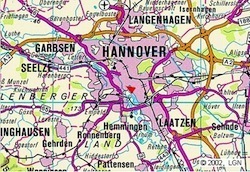
A map to the prison (to get detailed directions, click on the image)
“The five sessions with prisoners were conducted at JVA für Frauen (penitentiary for women) in Vechta, Germany, on June, 14 2012.6 It is the central women’s prison in the German state of Lower Saxony (in North-Western Germany, bordering the City of Hamburg) with a capacity for about 150 detained women in its main section…. 90 female inmates participated in our lab-in-the-field sessions, while 92 female students participated in our conventional lab sessions, yielding a total of 182 subjects.”
BONUS (probably not related): The Batman Theme, produced with sounds from real bats

A clever new claim that we are less intelligent
Yet another claim, from smart people who want to instruct us about intelligence, that we (if not they) have probably become less intelligent than many of those who preceded us:
“Were the Victorians cleverer than us? The decline in general intelligence estimated from a meta-analysis of the slowing of simple reaction time,” Michael A. Woodley, Jan te Nijenhuis, Raegan Murphy [pictured here], Intelligence, epub 2013. The authors, at Umeå University, Sweden, Vrije Universiteit Brussel, Belgium, University of Amsterdam, The Netherlands, and, University College Cork, Ireland, explain:
“We tested the hypothesis that the Victorians were cleverer than modern populations, using high-quality instruments, namely measures of simple visual reaction time in a meta-analytic study. Simple reaction time measures correlate substantially with measures of general intelligence (g) and are considered elementary measures of cognition. In this study we used the data on the secular slowing of simple reaction time described in a meta-analysis of 14 age-matched studies from Western countries conducted between 1889 and 2004 to estimate the decline in g that may have resulted from the presence of dysgenic fertility. Using psychometric meta-analysis we computed the true correlation between simple reaction time and g, yielding a decline of−1.16 IQ points per decade or −13.35 IQ points since Victorian times. These findings strongly indicate that with respect to g the Victorians were substantially cleverer than modern Western populations.”
Here is detail from the study, which we present at an unusual angle:
(Thanks to investigator Erwin Kompanje for bringing this to our attention.)

July 4, 2013
Mystery mass hiccups in Massachusetts. Time to consult Fesmire?
The Gloucester [Massachusetts] Times reports a mysterious medical outbreak.Outsiders (well, we) are suggesting that they contact Ig Nobel Prize winner Dr. Francis M. Fesmire, in case treatment is needed. Dr. Fesmire was awarded the 2006 Ig Nobel Prize for medicine, for his medical case report “Termination of Intractable Hiccups with Digital Rectal Massage” (at the Ig Nobel Prize ceremony at Harvard University that year, Dr. Fesmire demonstrated his technique — see photo below). The Gloucester report begins:
June 28, 2013
Still no answers on Essex Aggie hiccups cases
By Ethan Forman, Staff Writer
DANVERS — State health officials continue to quietly investigate what may have caused one to two dozen students to exhibit unexplained vocal tics or repetitive hiccups at Essex Agricultural and Technical School in Danvers, and to a lesser extent, North Shore Technical High in Middleton, this past school year.
The state is reaching out to more than 2,600 doctors in the region while investigating environmental factors that may have caused the symptoms, including air testing and visual observations inside school buildings. So far, according to a May 10 status report from the state Department of Public Health, air tests did not turn up anything that would contribute to “significant neurological effects”….
(Thanks to investigator Ivan Oransky for alerting us to this.) The photo below shows Dr. Fesmire delivering his acceptance speech at the Ig Nobel Prize ceremony in 2006. Photo: Alexey Eliseev.)

July 3, 2013
Hare in the air: How rare?
One vital statistic is only implied, and that just barely, in the Australian Transport Safety Bureau‘s report “Australian aviation wildlife strike statistics: Bird and animal strikes 2002 to 2009“. The report lists the number of times various animal species struck (or were struck by) aircraft. But it does not specify what percentage of those strikes occurred in the air, and what on the ground. Here is the report’s summary:
Hare/rabbit strikes were the most common animal struck, with kangaroos, wallabies and foxes/dogs making up the top four…. Three out of four turtle strikes reported for the entire period occurred in 2008-2009, as well as three out of six echidna strikes.

When the Pilot Met a Frog: Aviation Anomalies
“WHILE FLYING THE VISUAL APCH [approach], ABOUT 10 MI [miles] OUT, I FELT SOMETHING LAND ON MY R [right] FOOT. REACHING DOWN WITH MY R [right] HAND, I WAS SURPRISED TO FEEL SOMETHING COLD AND DAMP, WHICH MOVED …”
So begins an airline pilot’s report (number ACN: 311910) as archived by the US Aviation Safety Reporting System.
“The Aviation Safety Reporting System, or ASRS, is the US Federal Aviation Administration’s (FAA) voluntary system that allows pilots and other airplane crew members to confidentially report near misses and close calls in the interest of improving air safety.“
Reports logged in the database, which is maintained by NASA and now contains nearly a million entries, are anonymous, as the official website explains :
“ASRS’s database includes the narratives submitted by reporters (after they have been sanitized for identifying details).”
[ that's the narratives, not the reporters]
ACN: 311910, which is indexed under ‘anomalies’, continues …
“
… ASKING THE CAPT [captain] TO TAKE THE ACFT [aircraft], I LOOKED DOWN AND SAW A LARGE BULLFROG HOP OFF MY FOOT AND BEHIND THE RUDDER PEDALS, WHERE IT SAT LOOKING AT ME. WE LANDED WITHOUT INCIDENT, AND COULD NO LONGER SEE THE FROG. AS THE PAX [passengers] DEPLANED [left], ONE TOLD ME WE HAD A STOWAWAY FROG IN THE CABIN. WHEN THE PAX [passengers] WERE GONE, WE FOUND A TOTAL OF 8 LARGE BULLFROGS HIDING UNDER THE SEATS. WE NEVER FOUND OUT WHERE THEY CAME FROM.”
Anyone can interrogate the online ASRS database using an extensively configurable (though somewhat daunting) search page, (and yes, there are some entries for UFOs)
Notes:
[1] Oddly perhaps, there doesn’t appear to be a way of linking directly to a particular report – if you find one, let us know.
[2] The reports are automatically abbreviated, or one might say ‘jargonized’ – so ‘passengers’ becomes ‘pax’ and ‘aircraft’ becomes ‘acft’ etc. The added grey text is ours.
[3] the picture crop is courtesy User:Fir0002/Natures pics at Wikipedia]

July 2, 2013
Ig Nobel tickets will go on sale Tuesday, July 16
Tickets for the Twenty-Third 1st Annual Ig Nobel Prize Ceremony
will go on sale TUESDAY, JULY 16, 2013, at noon (US eastern time).
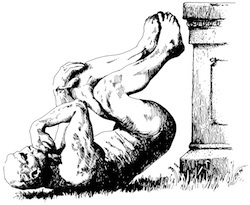 ALL the tickets will go on sale at once.
ALL the tickets will go on sale at once.
We expect that this year’s tickets will get snapped up very quickly.
TICKETS
The Harvard Box Office handles all ticket sales.
The physical ticket office, in Holyoke Center, is open some (but not all!) days from noon to 6 pm.
The web site is open 24 hours, every day.
Box Office web site: https://www.boxoffice.harvard.edu
Telephone (+1) 617-496-2222
THE CEREMONY
* Please note that this year’s ceremony
* will be a little earlier in the year than usual,
* and a little earlier in the evening than usual.
The ceremony will happen at the usual place. This year’s theme: FORCE.
WHERE: Sanders Theatre, Harvard University
WHEN: THURSDAY, SEPTEMBER 12, 2013, 6:00 pm.
Ceremony details: http://improbable.com/ig/2013/
REMINDER: If you would like us to email you a reminder just before tickets go on sale, sign up to the Ig Nobel events reminder list: <http://five.pairlist.net/mailman/listinfo/ig-nobel-events>

A mathematical model of ‘Gone with the Wind’
Mathematicians (of any competent sort) are like writers: they believe that they can describe almost anything. This study is an exercise in write about using math to describe a love story:
 “A mathematical model of ‘Gone with the Wind’“, Sergio Rinaldi [pictured here], Fabio Della Rossa, Pietro Landi, Physica A: Statistical Mechanics and its Applications, Volume 392, Issue 15, 1 August 2013, Pages 3231–3239. (Thanks to investigator Dan Vergano for bringing this to our attention.) The authors, at Politecnico di Milano, Italy, and the International Institute for Applied Systems Analysis, Laxenburg, Austria, explain:
“A mathematical model of ‘Gone with the Wind’“, Sergio Rinaldi [pictured here], Fabio Della Rossa, Pietro Landi, Physica A: Statistical Mechanics and its Applications, Volume 392, Issue 15, 1 August 2013, Pages 3231–3239. (Thanks to investigator Dan Vergano for bringing this to our attention.) The authors, at Politecnico di Milano, Italy, and the International Institute for Applied Systems Analysis, Laxenburg, Austria, explain:
“We develop a mathematical model for mimicking the love story between Scarlett and Rhett described in ‘Gone with the Wind‘. In line with tradition in classical physics, the model is composed of two Ordinary Differential Equations, one for Scarlett and one for Rhett, which encapsulate their main psycho-physical characteristics. The two lovers are described as so-called insecure individuals because they respond very strongly to small involvements of the partner but then attenuate their reaction when the pressure exerted by the partner becomes too high. These characteristics of Scarlett and Rhett clearly emerge during the first part of the film and are sufficient to develop a model that perfectly predicts the complex evolution and the dramatic end of the love story. Since the predicted evolution of the romantic relationship is a direct consequence of the characters of the two individuals, the agreement between the model and the film supports the high credibility of the story.”
Here’s detail from the study:
BONUS: A glimpse of the movie:

Marc Abrahams's Blog
- Marc Abrahams's profile
- 14 followers



